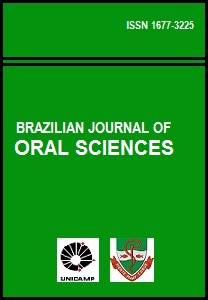Abstract
Aim: To evaluate the efficacy of the polylactide-polyglycolide copolymer Fisiograft® as a bone graft material in the treatment of interproximal intrabony defects clinically and radiographically. Methods: A total of 22 intrabony defects in 8 patients with chronic periodontitis (4 males and 4 females) aged 20 to 55 years were recruited and divided equally into two groups: control (open flap debridement alone) and experimental (open flap debridement with Fisiograft®). Recordings of probing pocket depth (PPD), clinical attachment level (CAL), gingival margin position (GMP) and radiovisiographic assessment was done at baseline and 6 months. Results: Statistical analysis was done by Wilcoxon Signed Rank test for intra-group comparisons and Mann-Whitney U-test for inter-group comparisons. The clinical parameters PPD, CAL and GMP were found to be statistically significant (p<0.05) within each group. Inter-group comparison showed only the CAL gain to be statistically significant (p<0.01). In relation to hard tissue changes, statistically significant (p=0.05) result was seen for the percent filling of the original defect, comparing the experimental and control groups 6 months postoperatively. Conclusions: Placement of Fisiograft® resulted in better healing of intrabony defects as assessed clinically and radiographically when compared to open flap debridement alone.The Brazilian Journal of Oral Sciences uses the Creative Commons license (CC), thus preserving the integrity of the articles in an open access environment.
Downloads
Download data is not yet available.

